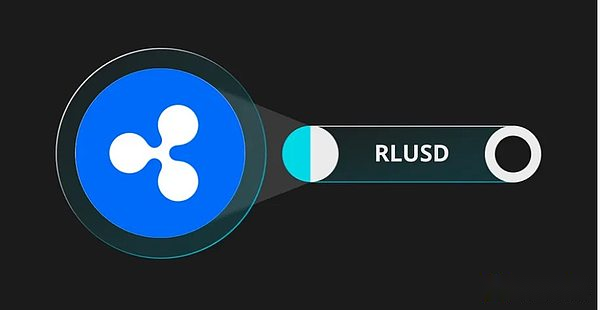
Author: Oz Sultan, Source: Quantum Economics, Compiled by: Shaw Bitchain Vision
Stablecoins, or digital tokens pegged to fiat currencies, have evolved from a niche infrastructure in the cryptocurrency sector to the core infrastructure of global payments, transactions and tokenized finance.The two most important developments in 2025: Tether’s announcement of the US-focused stablecoin USAT, and the RLUSD launched by fintech company Ripple, showcases how existing market players and traditional financial players reposition for the regulatory era.


At the same time, the passage of the US GENIUS Act will lay the legal foundation for the development of compliant stablecoins and reshape the international stablecoin landscape.
Why USAT and RLUSD are crucial
Tether’s launch of USAT marks its strategic transformation: After years of controversy and scrutiny on support and governance of its global USDT tokens, Tether is building a U.S.-based, regulatory-first product designed specifically to operate within the new U.S. regulatory framework.
USAT will be issued through a U.S.-regulated entity with its custody and reserve relationship structure in compliance with federal requirements.
This is important because Tether’s scale gives USAT instant market relevance; if it gets developed, billions of dollars of on-chain liquidity could be transferred to tokens designed specifically to meet U.S. regulation.
Ripple’s RLUSD, by contrast, embodies a different route: a stablecoin born inside a regulated payment infrastructure company that emphasizes compliance and bank-grade custody from the outset.
Designed for enterprise-level channels and cross-border payments, RLUSD is positioned as a fully guaranteed and redeemable property designed to attract banks, payment processors and regulated businesses.
The coexistence of the two methods of issuer first (tether) and infrastructure first (ripple) reflects the diversification of the stablecoin model in the market.
What developments are allowed by the GENIUS Act
The GENIUS Act, promulgated in 2025 (the Innovation Act for Guiding and Establishing U.S. Stablecoin National Innovation Act) is the first comprehensive federal payment stablecoin framework in the United States.Its core features include: strict reserve requirements (actually 100% backed by high-quality current assets such as cash and short-term U.S. Treasury bonds), monthly public disclosure of reserves, compliance with anti-money laundering/knowing your customers (AML/KYC) regulations under the Bank Secrecy Act, and clear regulatory authority over the issuer (some entities are supervised by the Federal Deposit Insurance Company and the Office of the Currency Supervision).
It also defines the conditions for foreign stablecoin issuers to enter the U.S. market.
By clarifying legal status and regulatory expectations, GENIUS greatly reduces legal/regulatory uncertainty – a major obstacle for large financial institutions and mainstream market makers to enter the field.
For companies like Tether and Ripple, the law plays three roles:
1. Compliance Roadmap; It clearly stipulates the required reserve mechanisms, audits and disclosures to achieve legal product design rather than temporary remedies.
2. Provide an entrance for institutional participants;Banks and custodians can now build the issuance of stablecoins under clear regulatory regimes, thereby reducing counterparty risks and operational risks.
3. Market Legality; Stablecoins that meet regulations can be integrated into payment systems, financial infrastructure and tokenized financial products with more confidence, thereby attracting capital and application scenarios away from unregulated alternatives.
Global Outlook: Fragmentation, Competition and Regulatory Imitation
These actions by the United States are at a time when various international practices are complicated.Some jurisdictions (such as parts of Europe) emphasize prudent rules and sandboxes; others use national digital currencies or strictly regulated stablecoins.
Two results will occur in the next few years:
1. Regulatory arbitrage and competitive products.A market with a looser or faster licensing system may attract non-U.S. stablecoin issuers seeking to grow at scale.
Conversely, those issuers who ensure compliance with U.S. compliance requirements (such as the USAT’s goals) may abandon regulatory flexibility in exchange for huge market access and reputational advantages.Global players will choose between speed and legitimacy.
2. Interoperability and proxy relationships.Cross-border payments require bridges: regulated U.S. stablecoins require agency relationships, custody arrangements and overseas legal recognition.
The GENIUS Act stipulates that foreign issuers must go through a comparable judgment when entering the U.S. market, which recognizes this reality and indicates the potential for unified standards, but true interoperability still requires regulatory coordination between major markets.
Central banks in emerging market countries will pay close attention.
When the local currency fluctuates greatly, stablecoins (domestic or pegged to the US dollar) can stabilize remittance channels or aggravate the risk of dollarization; policy makers will adopt a loose framework or restrictive measures to deal with it.
Therefore, multilateral institutions and payment networks will play an important role in the maturity of cross-border stablecoin channels.
Impact of business and financial ecosystems
The regulated stablecoin ecosystem is expected to provide faster and cheaper USD denomination channels for remittances, merchant settlements, programmable finance and tokenized assets.
Banks and custodians working with compliant issuers can earn new fee income and provide custody and settlement services at scale.
Meanwhile, higher reserve standards and reporting requirements set by GENIUS increase existing costs, potentially leading to the concentration of issuance between well-capitalized companies and banks.
If reserves are liquid, transparent and regulated, systemic risks will be reduced; but centralized risks and operational dependencies (e.g. dependencies on a few custodians, auditors, or technology platforms) still need to be vigilant.
Monthly disclosure and audit standards are designed to mitigate the risk of runs, but stress testing and crisis response programs will be crucial as stablecoins become the infrastructure for the wider financial system.
What will happen in the future?
The emergence of USAT and the maturity of RLUSD symbolize a larger shift:Stablecoin market is shifting from wild western-style experiments to regulated market infrastructure.
GENIUS accelerates this shift by providing predictable rules and opening the door for mainstream finance.The possible result in the short term is aPolarized market:On the one hand, a highly regulated, institutional-backed stablecoin for payment and settlement in compliant jurisdictions; on the other hand, a set of parallel offshore or license-free tokens to meet the needs of crypto-native use cases.
For businesses, banks and policy makers, the priority is obvious:Focus on interoperability during design, adhere to robust trusteeship and governance, and conduct international coordination.For users, especially cross-border payment users and unbanked people, the prospect is to obtain US dollar liquidity faster and lower cost.Whether this goal can be achieved will depend on regulatory coordination, technical standards, and the ability of new players to balance compliance and availability.
therefore,The next few years will be a critical period to test whether stablecoins can be both a story in the cryptocurrency field and a cornerstone of a secure, regulated and widely used global digital finance.The GENIUS Act provides a blueprint for the United States; markets, technical experts and international regulators will jointly draw a specific picture.







